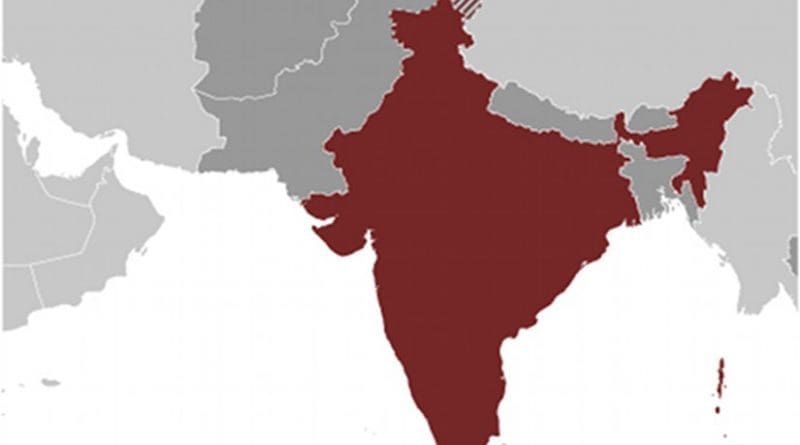Rewriting War History: Need To Keep The Balance – Analysis
By Mahendra Ved*
The government launching a major project to rewrite histories of all wars and major operations undertaken by the Indian armed forces seems a good idea, but for apprehensions about the current political dispensation’s thrust to ‘rewrite” history in general and dovetail it to a particular religious-cultural ethos.
Already, a controversy is brewing about induction of academics in premier institutions like the Indian Council of Historical Research (ICHR). The last Indian Science Congress also witnessed efforts to make mythology and folklore interpreted as science and history.
History of a war is vulnerable to such interpretations since it is easy to invoke patriotic sentiments. Would these histories, then, aim to show that Indians won all these wars and that the adversaries were all wrong and weak, meant to be demonized?
The project already underway aims to make history of wars “simple and reader-friendly”. Per se, it is a good idea to make people aware of the role the armed forces have played in the nation’s life. But it is to be hoped that this is not aimed politically to “catch ’em young”.
Lessons need to be learnt from the lop-sided, anti-India and anti-Hindu history being taught in Pakistan’s schools where generations brought up on sanitised history have had no access to any other viewpoint.
The war histories, classified secrets for long, have been good source for historians in general, particularly war historians. These are academic pursuits, and those who engage in it must be willing to delve into details that are “too technical and full of military jargon”. It would be wrong to hold back the historical records in ‘raw’ form from the academia, if that is the idea to rewrite war history in ‘readable’ format.
Our chequered history shows that Indians were weak and divided and on many occasions, the outside ‘ínvader’ was invited by one or more of the local parties engaged in a territorial dispute. It also shows that Indians lost to smaller, but more determined and better-trained adversary, who introduced the horse, the swifter, easy-to-control animal compared to the elephant in the battlefield at one time and gunpowder at another.
The Indian armed forces that evolved during British India and in the princely states were essentially mercenary in nature. There was no forced enlistment. Millions fought in the two World Wars and thousands died, not for their enslaved country, but the ruler who paid.
The ethos changed, but not basically, after Independence. Those who joined Netaji Subhas Bose’s Indian National Army and those who participated in Mumbai’s ‘Naval Mutiny’ were kept out of the armed forces. The forces that divided on India-Pakistan lines turned adversaries overnight and have fought four wars. These hostilities have characterised the relationship.
This being the case, it would be a challenge to interpret and judge the role of the military that evolved on caste, regional and religious lines.
Release of the new war histories will kick off on September 1 with an account of the 1965 war, in keeping with the government plan to celebrate its 50th anniversary from August 28 to September 26 as “a great victory” over Pakistan. This has raised eyebrows since the 1965 war ended in a “stalemate”.
This was unlike the crushing defeat of Pakistan in the 1971 war. That defeat, essentially, was in the erstwhile east wing that became Bangladesh. It was overrun, but partially, by the India-Bangladesh joint forces who hurried to take Dhaka and force the surrender of Pakistan’s 93,000 combatants.
The government is likely to hold back account of the Sino-Indian conflict of 1962, especially the classified report by Indian Gen. Henderson-Brookes that blames the political leadership of the day.
However, British author Neville Maxwell, who wrote a damning account on India’s performance after he had access to this report, posted it on a web site two years ago. So, details are known, although there is “nothing official” about them.
Conflicts cause euphoria during and in the aftermath and generate much popular lore. Serious studies, if at all, follow after the dust has settled down, which could take years.
Official records, as well as popular perceptions show Indian armed forces as ‘liberators’ of Goa, while wresting Hyderabad from the Nizam’s control was projected as “police action”, even though the army was involved.
Perceptions are that India was ‘betrayed’ in 1962, although it was India that under took the “forward movement”. India was ‘surprised’ in 1965 and in the 1999 Kargil conflict. How is that going to be tackled?
How is the role and performance of the Indian Peace-Keeping Force (IPKF) in Sri Lanka going to be viewed?
Details of these conflicts are available from studies, in both countries as also institutions elsewhere in the world, and from memoirs of those who were part of the conflict. Judicial and military probes have gone deep into some of them. The 1971 war, for instance, caused the Justice Hamoodur Rahman Report in Pakistan where Lt. Gen. A.A.K. Niazi who surrendered also had his version. Many Indian officers, too have written their versions commenting on strategic and tactical omissions and commissions.
Each account carries its own interpretation. The challenge for the historians engaged by the government to rewrite and simplify them would be to steer clear of differing, even conflicting, claims and opinions. This, of necessity, would have to be done in an informed manner by informed persons.
*Mahendra Ved is a New Delhi-based writer and columnist. He can be reached at [email protected]

